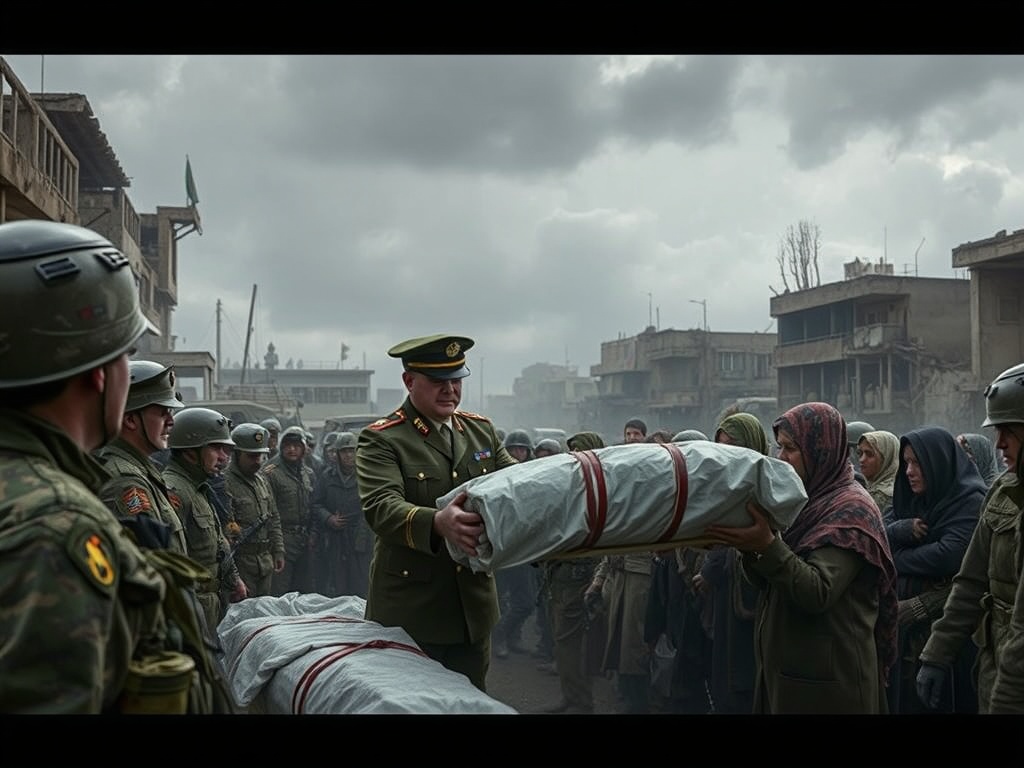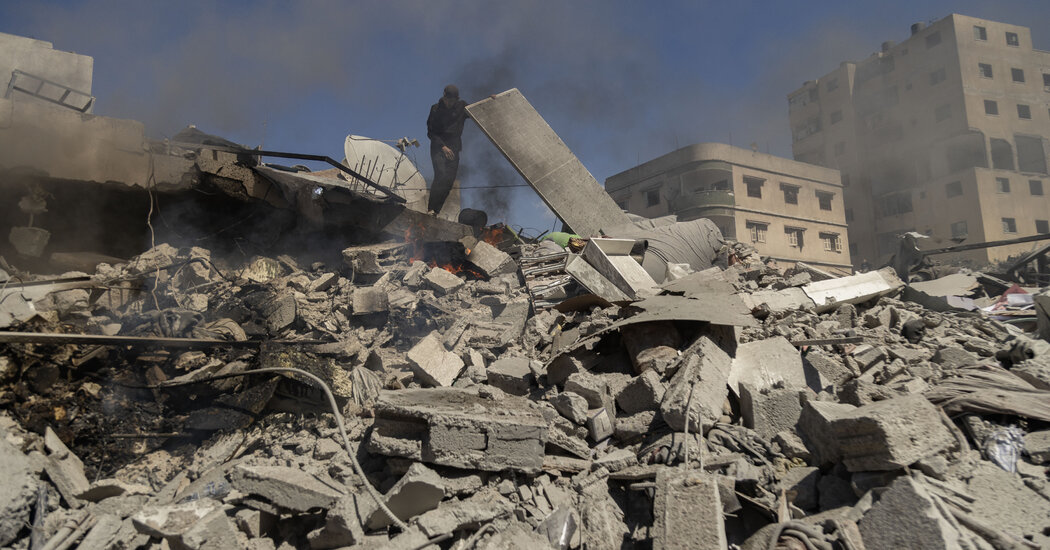Hamas Returns Bodies of Israeli Hostages
In a significant and somber development, Hamas has returned the bodies of four Israeli hostages, including the young Kfir Bibas, only nine months old, and his four-year-old brother, Ariel. The tragic handover took place on Thursday in Gaza and was facilitated by the Red Cross, marking a delicate ceasefire agreement that has temporarily halted 15 months of relentless conflict. Alongside the Bibas siblings, the body of 84-year-old journalist and peace activist Oded Lifschitz was also recovered, adding to the profound sorrow of the occasion.
The handover ceremony, which occurred in Khan Younis, Gaza, was marked by a poignant display of four black coffins on a stage, solemnly observed by masked members of Hamas and other factions. Hamas claimed that the Bibas family and their guards lost their lives due to Israeli airstrikes, a statement that Israeli authorities have not confirmed nor denied. For many in Israel, the Bibas family has come to symbolize the horror experienced on October 7, 2023, a day that has left an indelible mark on the nation.
The bodies are set to be transported to the Abu Kabir forensic institute in Jaffa for formal identification, with many Israelis lining the route and others gathering in Hostages Square in Tel Aviv to pay their respects. The abduction of Kfir Bibas, along with his mother and older brother, during the tragic events of October 7, has been a focal point of national grief.
In a public address, Hamas asserted that they had “preserved the lives of the occupation prisoners,” claiming they provided them with care and treated them with humanity, yet lamented that the Israeli military’s actions resulted in their deaths along with their captors. This statement included accusations directed at Israeli Prime Minister Benjamin Netanyahu, alleging attempts to evade accountability for the fatalities. The Israeli government has refrained from commenting on these allegations.
The Israeli military confirmed that it facilitated the transfer of the coffins into Israel from Gaza, stating, “IDF representatives are accompanying their families at this difficult time.” Following the somber event, Israeli President Isaac Herzog expressed the collective grief of the nation, stating, “the hearts of an entire nation lie in tatters.”
Upcoming Hostage Releases and Ceasefire Negotiations
This mournful event is expected to be succeeded by the release of six living hostages on Saturday, as part of an exchange for hundreds of Palestinian prisoners, primarily women and minors who have been detained by Israeli forces amid the ongoing conflict. Under the initial phase of a ceasefire agreement brokered in January, Hamas committed to releasing 33 Israeli hostages in exchange for nearly 2,000 Palestinian prisoners, all aimed at paving the way for a broader peace process.
As the first phase of the agreement nears its early March expiration, mediators from Qatar, Egypt, and the United Nations are amplifying their efforts to sustain momentum in the negotiations. The anticipated second phase aims to establish a permanent ceasefire, facilitate the exchange of remaining hostages for Palestinian prisoners, and ensure the complete withdrawal of Israeli forces from Gaza. The final phase envisions the return of all remaining bodies of deceased hostages and a comprehensive reconstruction of Gaza, a task expected to span several years.
Despite the ceasefire holding so far, tensions continue to simmer beneath the surface. Hamas had previously postponed a scheduled hostage release on February 15, alleging Israeli violations of the agreement, a claim that Israel denies vehemently. Adding to the complexity, U.S. President Donald Trump has made provocative remarks suggesting that the United States should assume control of Gaza and “clean it” of Palestinians, drawing international condemnation and stirring concerns about the authenticity of American support for a diplomatic resolution. Netanyahu has previously expressed his appreciation for Trump’s backing.
Humanitarian Crisis Deepens
Amidst the political maneuvers and negotiations, the humanitarian situation in Gaza grows increasingly dire. Human rights organizations have accused Israel of obstructing vital aid, including mobile homes, medical supplies, and essential equipment needed for rubble removal. Diplomatic sources have indicated that while entities such as the United Nations and Qatar advocate for the delivery of temporary shelters, these efforts face significant setbacks due to Israeli restrictions.
Medical aid organization Doctors Without Borders has raised alarms that aid deliveries remain “far below what is needed,” while the World Food Programme has emphasized the urgent necessity for a “massive influx” of food and humanitarian supplies to meet the escalating demands. Plans are underway to double the provision of bread in northern Gaza in the coming days, yet the existing aid pipeline remains woefully insufficient.
Simultaneously, violence has surged in the occupied West Bank, with Israeli forces conducting large-scale operations in Jenin and Tulkarem, displacing thousands of residents. Between February 11 and 18, Gaza’s Ministry of Health reported 72 Palestinian fatalities and 57 injuries, including casualties from recently recovered bodies, underscoring the ongoing toll of the conflict.
Looking Ahead: Prospects for Peace

In a recent proposal, Hamas has suggested the release of all remaining captives in Gaza in exchange for a lasting truce and the complete withdrawal of Israeli forces from the region. This proposal follows Trump’s statements opposing a phased weekly release of captives and advocating for their collective liberation. Meanwhile, Egypt’s President Abdel Fattah al-Sisi is reportedly heading to Saudi Arabia, where he is expected to discuss a post-war reconstruction plan for Gaza, a move that may counter Trump’s recent proposals.
As diplomats scramble to craft plans for enduring peace, the ceasefire remains precariously intact, leaving many to wonder what the future holds for the region.




